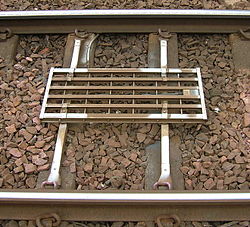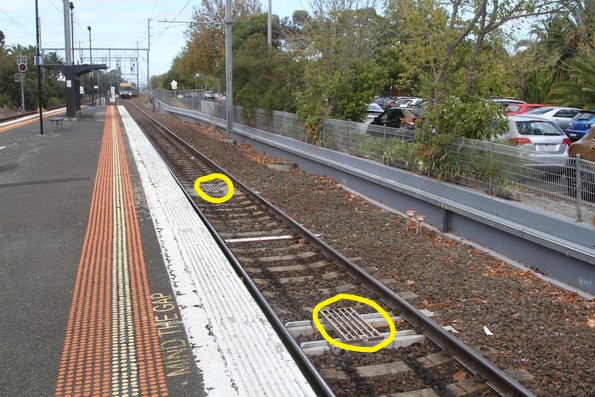1/15 Have you ever looked at the tracks and seen equipment in between the running rails and thought, “I wonder what that does?” This is the first in a series of threads to explain some of the equipment we use and how it helps the driver of a train. First up, TPWS!
2/15 TPWS stands for Train Protection & Warning System and is known colloquially on the Railway as “The Grids”, for obvious reasons. Essentially, it is the speed police for trains. Grids are placed between the running rails in pairs like this.
3/15 The first set of grids is the Arming Loop – as the train passes over the unit, a sensor arms the TPWS system and a clock starts to tick. The speed that the system is set to is determined by how far away the second set of grids (the Trigger Loop) is located –
4/15 a simple Speed = Distance/Time calculation. Assuming that the train has not passed over the Trigger Loop before the time runs out, the Trigger Loop disarms and the train continues on its way.
5/15 If, however, the train does pass over the Trigger Loop before the time runs out, it is running too fast for that section of track and the TPWS engages the brakes of the train, bringing it to a stand – known in the industry as “Tripping the Grids”.
6/15 This, therefore, protects both the train and its occupants from a potential incident.
7/15 TPWS is used in many ways. It can be employed to check the speed of a train as it approaches a reduction in line speed and there is also a set of grids around 40-50m before any set of buffer stops
8/15 (if you are at Waterloo, stand on a platform without a train, around the site of the platform clocks and look at the track, you’ll see TPWS there).
9/15 It is also used twice around red signals. There is a set of grids on approach to the signal and also a set at the site of the signal – in the case of the latter, the arming and firing grids are right next to each other, meaning that they will fire at any speed over zero!
10/15 For both these types, the Arming Loop is only active when the associated signal is displaying a red aspect. You may have seen a train at a station with a level crossing open to road traffic ahead of it and wondered what would happen if the train started to move forwards.
11/15 If the level crossing is open, the signal protecting it would be red and the TPWS grids energised. If the train started to move, it would be stopped immediately by the grids.
12/15 Only once the level crossing is closed properly can the signal clear for the train and the grids will be de-energised, allowing the train to move.
13/15 Inside the cab we also have a piece of equipment called a Driver Reminder Appliance (DRA). When we are stopped at a red signal, we are required to switch the DRA on – helpfully it glows red when we do – and this prevents the driver from taking power and moving the train.
14/15 We are only allowed to switch the DRA off once the signal clears, adding another layer of security to the safety of the Railway. As part of our route knowledge,
15/15 a professional train driver will know the speed limits of every piece of track that he will be asked to drive over and, therefore, incidents of Tripping the Grids are extremely rare but, as with many things on the Railway, it is always better to be safe than sorry!

 Read on Twitter
Read on Twitter



